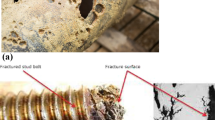Abstract
A valve lock, also known as a valve lock out device, is a device used to close off pressured valves, ensuring that machinery that uses valves remains switched off during maintenance. The paper discusses a variety of valve locking devices, ranging in security levels, including visual seals, car seals or wire locks, pad or chain locks, single locks, and interlocks. As part of the process and safety evaluations, locking devices should be selected, and the results should be reflected in piping and instrument diagrams (P&IDs) for the valves. The primary objective of this study is to incorporate locking devices into industrial valves in the oil and gas industry so that they will be safer and more reliable. Using valve locking prevents an unauthorized person from accidentally operating the valve, thus enhancing its safety and reliability during operation. For this purpose, Johan Castberg, a recent project on the Norwegian continental shelf, was chosen. From offshore project experience, it has been established that valve interlocks have been selected and applied primarily to valves. Valve locking devices have been selected for analysis because they can greatly enhance the safety and reliability of valves during operation. There were eight types of interlocks identified for isolation valves near PSVs, pumps, control valves, heat exchangers, and rupture disks. Most of the valves that are locked are located near pressure safety valves. There are fewer interlocks in isolation valves for control valves and rupture devices compared to other arrangements. A number of recommendations are made for future studies, including the investigation of electrical key cabinets and the study of material selection and corrosion for locking mechanisms. The electrical key cabinets are very important valve locking systems since they are intelligent options which enable operators to trace the keys in the plant and to avoid forgetting to exchange them when necessary. In order to avoid damage to the keys due to corrosion, material selection and corrosion control are important aspects.
















Similar content being viewed by others
Code or data availability
Not applicable to this paper.
References
Aumanand MA, Konnur MS (1999) A novel method of using a control valve for measurement and control of flow. IEEE Trans Instrum Meas 48(6):1224–1226
Bjerre M, Eriksen JG, Andreasen A, Stegelmann C, Mandø M (2017) Analysis of pressure safety valves for fire protection on offshore oil and gas installations. Process Saf Environ Prot 105:60–68
Dearden HT (2013) Partial stroke testing: diagnostic or proof test? Meas Control 46(5):152–153
Ding L, Khan F, Ji J (2022) A novel vulnerability model considering synergistic effect of fire and overpressure in chemical processing facilities. Reliab Eng Syst Saf 217:108081
Dossena V, Marinoni F, Bassi F, Franchina N, Savini M (2013) Numerical and experimental investigation on the performance of safety valves operating with different gases. Int J Press Vessels Pip 104:21–29
Heijnen WHPM, Kolthof WJ, ter Horst BH (1989) Subsurface Safety Valve Developements for Gaswells. Paper presented at the SPE Offshore Europe, Aberdeen, United Kingdom, pp SPE-19283-MS. https://doi.org/10.2118/SPE-19283-MS
International Electrotechnical Commission (IEC) (2010) IEC 61508, functional safety of electrical/electronic/programmable electronic safety-related systems, Part 1: general requirements, 2nd edn. Geneva
Jeon SY, Yoon JY, Shin MS (2010) Flow characteristics and performance evaluation of butterfly valves using numerical analysis. IOP Conf Ser: Earth Environ Sci 12(1):012099. https://doi.org/10.1088/1755-1315/12/1/012099
Joye SB, Bracco A, Özgökmen TM, Chanton JP, Grosell M, MacDonald IR, ..., Passow U (2016) The gulf of Mexico ecosystem, six years after the Macondo oil well blowout. Deep Sea Res II: Top Stud Oceanogr 129:4–19
Krasovskii AY, Orynyak IV (2010) Strength and reliability of piping systems. Strength Mater 42:613–621
Lemkowitz SM, Pasman HJ (2014) A review of the fire and explosion hazards of particulates. Kona Powder Part J 31:53–81
Lundteigen MA, Rausand M (2007) The effect of partial stroke testing on the reliability of safety valves. ESREL’07
Lundteigen MA, Rausand M (2008) Partial stroke testing of process shutdown valves: how to determine the test coverage. J Loss Prev Process Ind 21(6):579–588
Mukherjee S (2008) Pressure-relief system design. Chem Eng 115(11):40–45
Mutawe AM, Tsunehara R, Glaspey LA (2002) OSHA’s lockout/tagout standards: a review of key requirements. Prof Saf 47(2):20
Nesbitt B (2007) Handbook of valves and actuators: valves manual international, 1st edn. Elsevier, Oxford
Nolan D (2010) Handbook of fire and explosion protection engineering principles for oil, gas, chemical and related facilities, 2nd edn. Elsevier (Gulf Professional Publishing). Houston. ISBN: 9781437778588
Norwegian Oil Industry Association (2013) Valve technology (2nd revision). Norsk Olje & Gass, Stavanger
Rausand M, Vatn J (1998) Reliability modelling of surface controlled subsurface safety valves. Reliab Eng Syst Saf 61(1–2):159–166
Russo A (2015) The importance of continuous improvement in occupational health and safety management and regulation in the oil and gas industry. Franklin Bus Law J 2015(3)
Sato Y (2008) Introduction to partial stroke testing. In: 2008 SICE Annual Conference. IEEE, Chofu, Japan, pp 2754–2758. https://doi.org/10.1109/SICE.2008.4655133
Shimamura Y (2002) FPSO/FSO: State of the art. J Mar Sci Technol 7:59–70
Skousen PL (2011) Valve handbook, 3rd edn. McGraw-Hill Education, New York
Smit P, Zappe RW (2004) Valve selection handbook, 5th edn. Elsevier, New York
Sollid K, Henriksen LB, Hansen JO, Thießen O, Ryseth A, Knight S, Groth A (2021) Johan Castberg: the first giant oil discovery in the Barents sea
Sotoodeh K (2018) Why are butterfly valves a good alternative to ball valves for utility services in the offshore industry? Am J Ind Eng 5(1):36–40. https://doi.org/10.12691/ajie-5-1-6
Sotoodeh K (2019) Safety integrity level in valves. J Fail Anal Prevent 19:832–837. https://doi.org/10.1007/s11668-019-00666-2. (Springer)
Sotoodeh K (2022) Safety and reliability analysis for butterfly valves in the offshore oil and gas industry. J Saf Reliab. https://doi.org/10.1080/09617353.2022.2107254. (Taylor & Francis)
Sotoodeh K (2021) Safety and reliability improvement of valves and actuators for the offshore oil and gas industry through optimized design. University of Stavanger. Doctor Philosophiae (Dr. Philos) UiS no.573. Faculty of science and technology. ISBN:978–82–7644–987–7
Summers A, Zachary B (2000) Partial-stroke testing of safety block valves. Control Eng 47(12):87–89
Yusof MB, Abdullah NHB (2016) Failure mode and effect analysis (FMEA) of butterfly valve in oil and gas industry. J Eng Sci Technol 11(9):9–19
Zhao G (2015) An easy method to design gas/vapor relief system with rupture disk. J Loss Prev Process Ind 35:321–328
Funding
The authors have no relevant financial or non-financial interests to disclose.
Author information
Authors and Affiliations
Contributions
The manuscript is written by only one author, Karan Sotoodeh.
Corresponding author
Ethics declarations
Ethics approval
Not applicable to this paper.
Consent to participate
Not applicable to this paper.
Consent for publication
Not applicable to this paper.
Conflicts of interest
The author declares no competing interests.
Rights and permissions
Springer Nature or its licensor (e.g. a society or other partner) holds exclusive rights to this article under a publishing agreement with the author(s) or other rightsholder(s); author self-archiving of the accepted manuscript version of this article is solely governed by the terms of such publishing agreement and applicable law.
About this article
Cite this article
Sotoodeh, K. Improvement of valve safety and reliability through the use of valve locking devices. Saf. Extreme Environ. (2023). https://doi.org/10.1007/s42797-023-00094-4
Received:
Revised:
Accepted:
Published:
DOI: https://doi.org/10.1007/s42797-023-00094-4
Keywords
- Emergency shut-down (ESD) valve
- Safety instrumented system (SIS)
- Single lock
- Failure mode and effect analysis (FMEA)
- Safety integrity level (SIL)
- Lock out Tag out (LOTO) system
- Occupational safety and health administration (OSHA)
- Heat exchanger isolation valves locking devices
- Pad and chain locks
- Locking device security level




